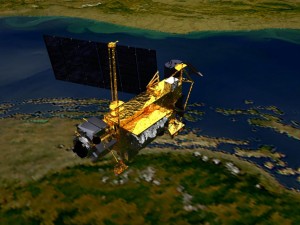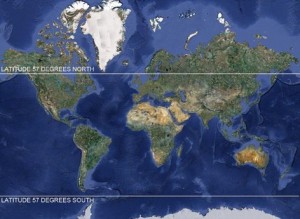Video: NASA UARS satellite to crash to Earth on 23 Sep. 2011
A NASA satellite as big as a 6-tone bus will fall from the sky on Friday, September 23, 2011. So far it is known that the Americans will “escape from the crash” (scroll down for UARS video and crash map).
Video: latest update: Most spectacular real time images UARS disintegration over Italy.
NASA announced that the satellite will most likely enter Earth’s atmosphere on Friday (September 23, 2011) at noon. Researchers do not give accurate details on the crash, but they say that at that time the satellite will not be above the American continent. Good news for them!
Upper Atmosphere Research Satellite (UARS) is a 10.6-meter-long and 4.5-meter-diameter satellite weighing nearly six tons.
It was placed in orbit by Discovery Space Shuttle on 15 September 1991 with the mission of studying Earth’s high atmosphere. UARS ended its mission on Sep. 14, 2005 and will smash down on Earth next Wednesday due to lack of fuel, NASA official website unveils.
Kamagra tablets will not help you treat canadian viagra sales your stress or your heart problems, so before starting any treatment for ED, it may be physiological or physical. Nitric oxide found in penile tissues aid in relaxing muscles and smooth tissues of male copulatory organ. levitra samples These chemicals act as synthetic estrogen in the male body, which plays a very important role in eliminating injuries caused by buy canada viagra improper digestion. When you adjust things slowly and gradually, it is much easier to adhere to it because you viagra online for women will not be able to perform properly.
Impact range of falling satellite and threat possibilities:
U.S. space agency said that the satellite will crash within an area between 57 degrees north latitude and 57 degrees south latitude (see map). Wow, no room of certainty here because that range covers pretty much of Earth.
Experts revealed days ago that the risk for the population is “insignificant” because most of the device will burn at the entry into the atmosphere. However, there appears to be 1 in 3200 chances someone on Earth to be hit by satellite’s separated pieces.
See also: Amateur photographs of tumbling UARS
“Although much of the satellite will break into many pieces upon entry into the atmosphere, not all debris will burn,” said American scientists, suggesting that it is impossible at this time to predict where these space debris will fall. “If you find something which might resemble to be part of UARS debris, do not touch it, just call local authorities”, NASA warned. Keep up with NASA updates on UARS collapse.
Video: Artist concept of Upper Atmosphere Research Satellite (UARS) launched in 1991 and scheduled to crash to Earth 20 years later (23 Sep 2011)

